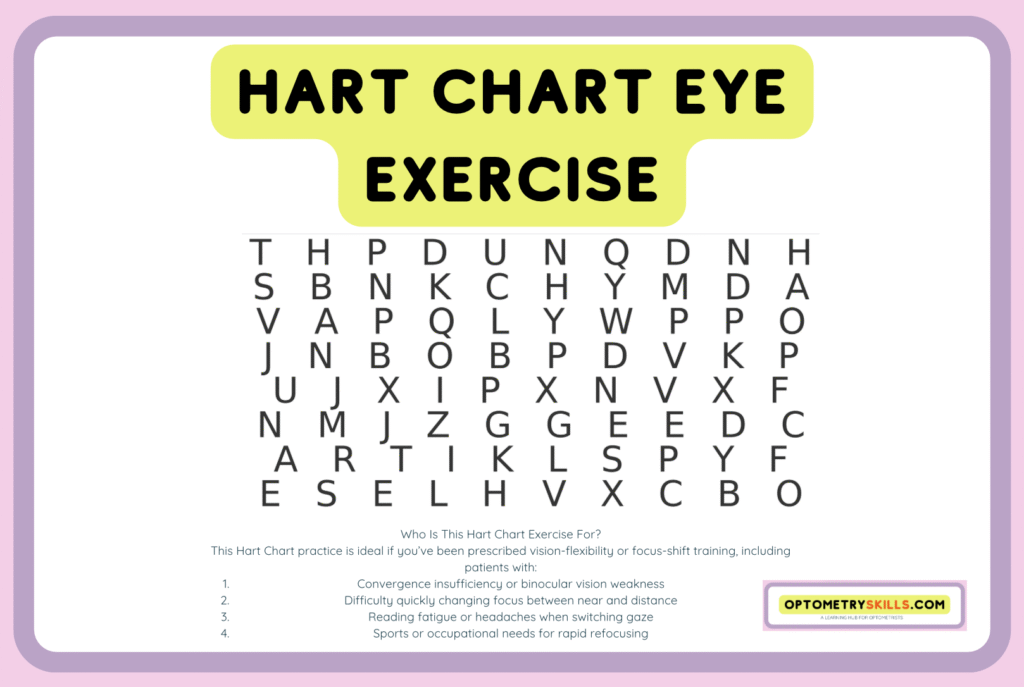
Read near/far alternately:
I
E
K
Z
P
I
H
K
K
V
J
E
T
V
E
B
F
T
F
P
Y
E
W
Q
Y
Q
N
E
X
H
Z
Z
Y
O
X
L
I
Q
J
B
M
J
J
M
K
M
J
U
E
L
O
V
R
W
Y
U
Z
M
N
Y
U
B
C
B
K
U
Y
L
J
X
L
Q
J
F
I
X
B
J
L
N
U
Y
R
J
J
K
E
G
U
A
N
G
C
E
Z
J
L
P
G
S
How to Do the Hart Chart Eye Exercise
Who Is This Hart Chart Exercise For?
This Hart Chart practice is ideal if you’ve been prescribed vision-flexibility or focus-shift training, including patients with:
- Convergence insufficiency or binocular vision weakness
- Difficulty quickly changing focus between near and distance
- Reading fatigue or headaches when switching gaze
- Sports or occupational needs for rapid refocusing
Download this Pdf of Hart Chart
- Prepare Your Charts
- On-screen chart: This is the On-screen chart which you will use for near.
- Wall-mounted chart: Download and print the PDF at A4 size. Tape it on a wall at eye-level, about 3 m (10 ft) from where you’ll stand or sit.
- Position Yourself
- Screen distance: Hold your device or sit so the on-screen chart is about 40 cm (16 in) from your eyes.
- Wall distance: Face the printed chart at 3 m, keeping your head still—only your eyes should move.
- Reading Sequence
- Line 1: Read the first row of letters on the screen,(when you click, the letter enlarges) then immediately shift your gaze and read the first row on the wall chart.
- Line 2: Move back to the screen, read row 2, then back to the wall, read row 2.
- Continue this line-by-line alternation through all 10 rows.
- Session Details
- Cycles: One full pass through all 10 rows on both charts = 1 cycle.
- Duration & Frequency:
- Acute phase: 3–5 cycles, twice daily (morning & evening)
- Maintenance: 3–5 cycles, once daily
- Form & Focus
- Keep your head stationary; use only eye movements.
- If you lose your place or letters blur, pause, blink, refocus, and resume.
- Speak letters aloud or subvocalize to confirm accuracy.
- Tracking Progress
- Log: Date, number of cycles, any letters repeated.
- Rate Comfort: 1 (very easy) to 10 (very difficult).
- Over time you should see fewer repeats, faster shifts, and lower difficulty ratings.
By alternating line-by-line between your device and the wall-mounted chart, you’ll strengthen your eye’s ability to switch focus quickly and comfortably—helping with reading, screen work, sports, and daily tasks.

